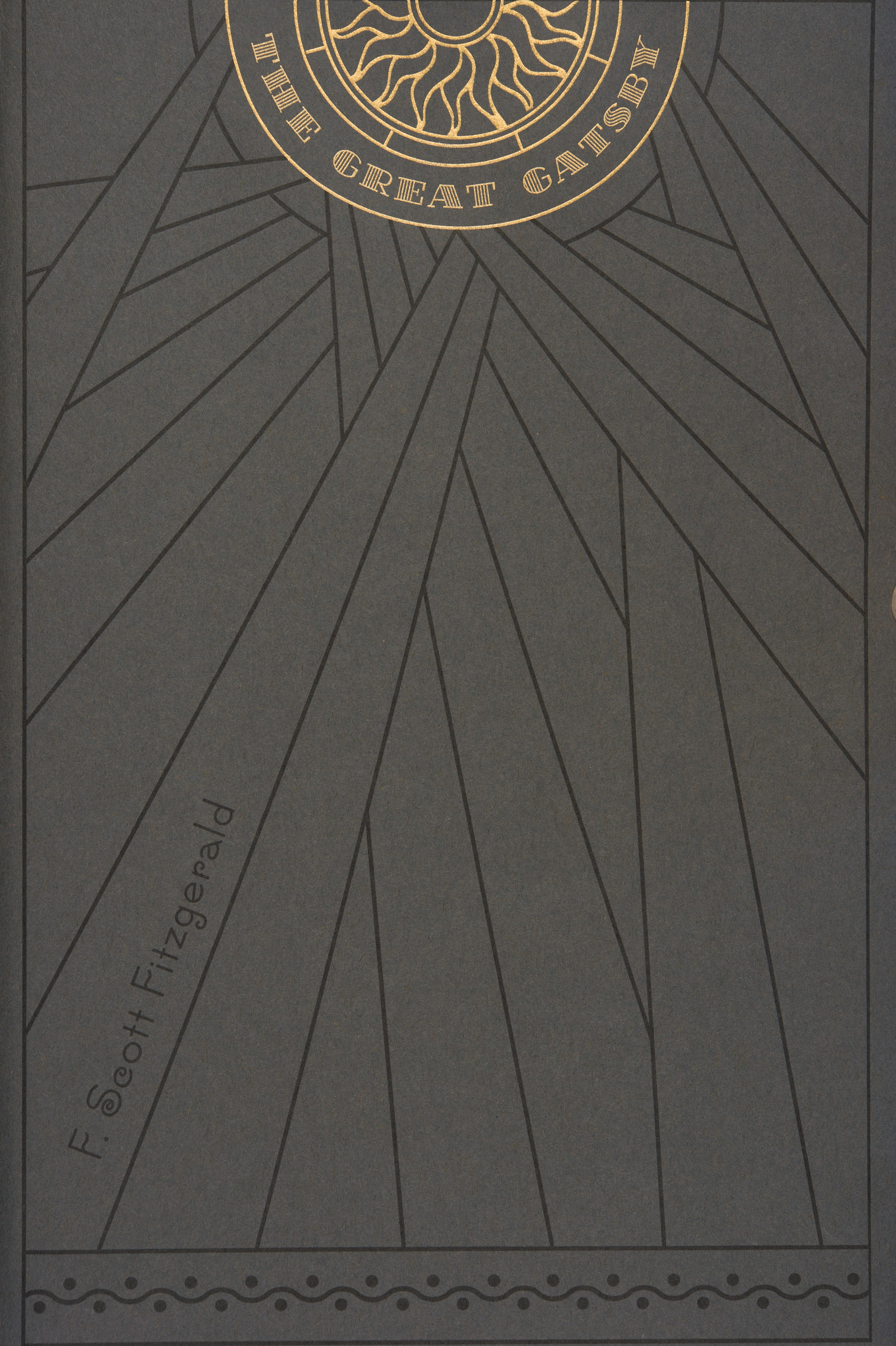
It seems that many of my school peer-group read The Great Gatsby in high school or college. Somehow, I never did. And for the subsequent 35 years I never got around to F. Scott Fitzgerald. I’d run across his name or a reference to his books when reading other authors of his time and just figured I’d get to him sometime or the other. Then the Great Gatsby movie came out (again?) and everyone was talking about him again and I thought about reading him again – I didn’t see the movie. But I had other things to read and the years slipped by until Thornwillow Press announced their edition on Kickstarter. And, like often happens with books and authors further down my “To Be Acquired & Read” list, the happy chance of finding a nice edition at the right price point bumped it up the list. As I have done with all the titles I’ve acquired from Thornwillow thus far, I reserved a copy in the paper-wrapper state, which is an amazing value for the money ($95!), and more in line with my current book budget than most private press books out their right now. And it got bumped up to “read next” once it was in my hands because it was an illustrated letterpress edition that seemed to really want to be read.
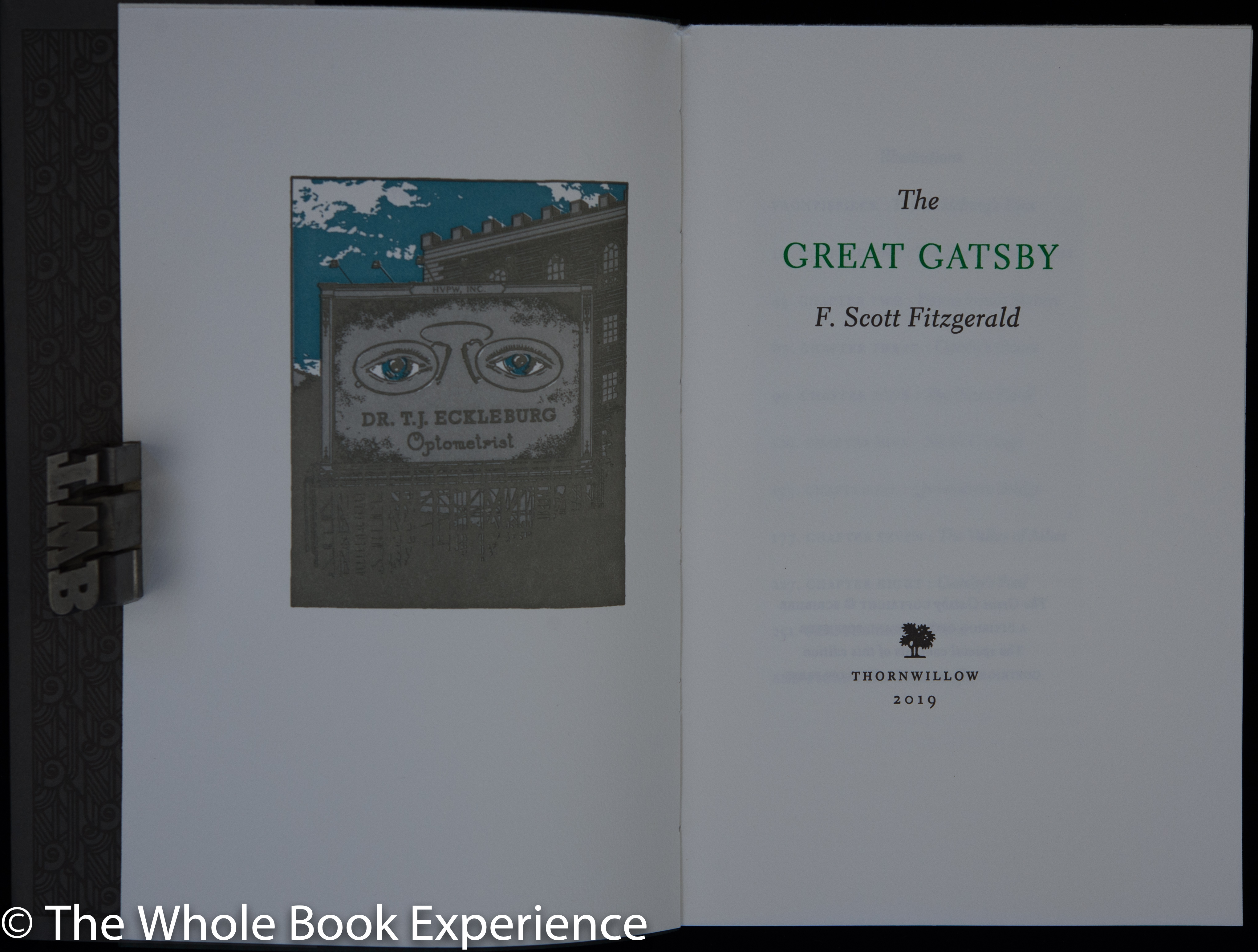
I fear I may have waited too late in my life to really enjoy Fitzgerald. I haven’t gone out of my way to research him but my vague impression is: white, alcoholic, misogynistic male writer type who may very well have not given his wife Zelda as much credit for his writing as she was due. While the publishing industry remains enamoured of the type, I’m pretty much over them. If this were a library book, I’d probably not give it a reread. My first impression is that once was enough. But since I have this fine press edition, I may give it another chance sometime down the road just for the joy of reading a book made with care, craft, and love. There is just so much to read and so little time in a reading life. And I’d be more tempted to give one of his other books a try before coming back to this one. Maybe sandwiching my reading of Fitzgerald between the brilliant Proust and Mercé Rodoreda writing of the same gilded times affected my opinion of the novel.
There were some redeeming factors in the novel, however. I’m sensitive to place and my surroundings and I like writers that spend time describing the settings and environs of their story. While I’ve been in New York City a couple of times (terrifying for this suburbanite), I’ve never spent any time on the island. But this passage
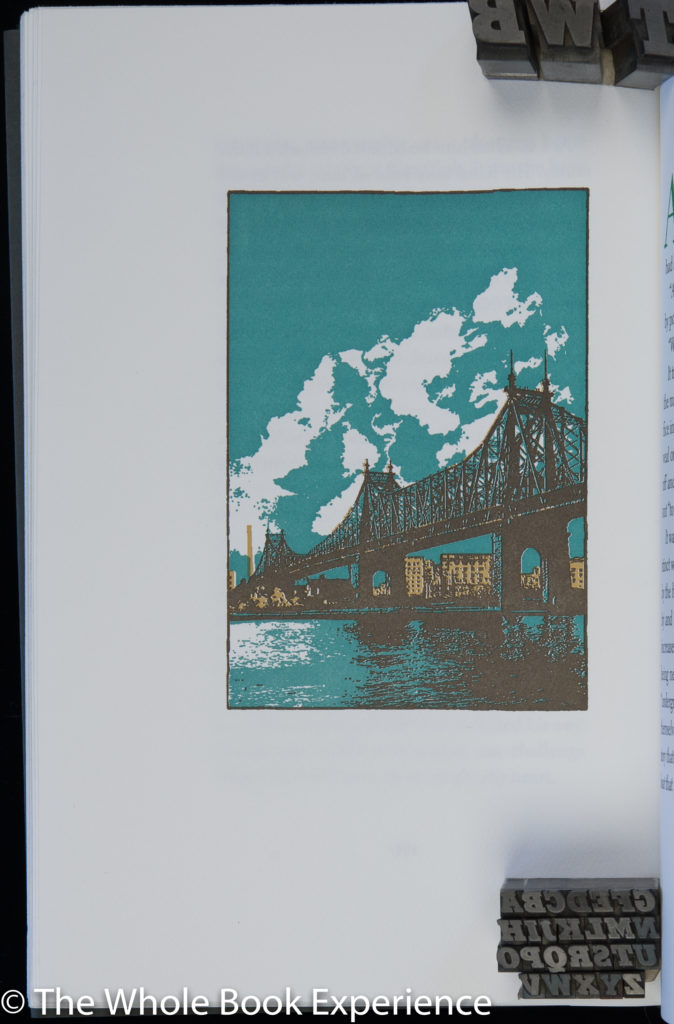
Over the great bridge, with the sunlight through the girders making a constant flicker upon the moving cars, with the city rising up across the river in white heaps and sugar lumps all built with a wish out of non-olfactory money. The city seen from the Queensboro Bridge is always the city seen for the first time, in its first wild promise of all the mystery and the beauty in the world.
made me want to explore that transition from Long Island to the island of Manhattan. The places in the novel are really the only “characters” I could get behind. Living as I do in an area where older homes are being torn down and replaced with McMansions, I could relate to the image of Nick sitting in his rented bungalow next to Gatsby’s mansion, and the discontinuity that causes in the perception of a neighborhood or community. I have to admit that Gatsby’s parties did remind me of my high school days when I would often find myself at parties — on a much smaller scale, however — where neither I nor many of the other guests knew the host but were happy to have a place to be and to maybe get a free drink. I don’t miss those days, however.
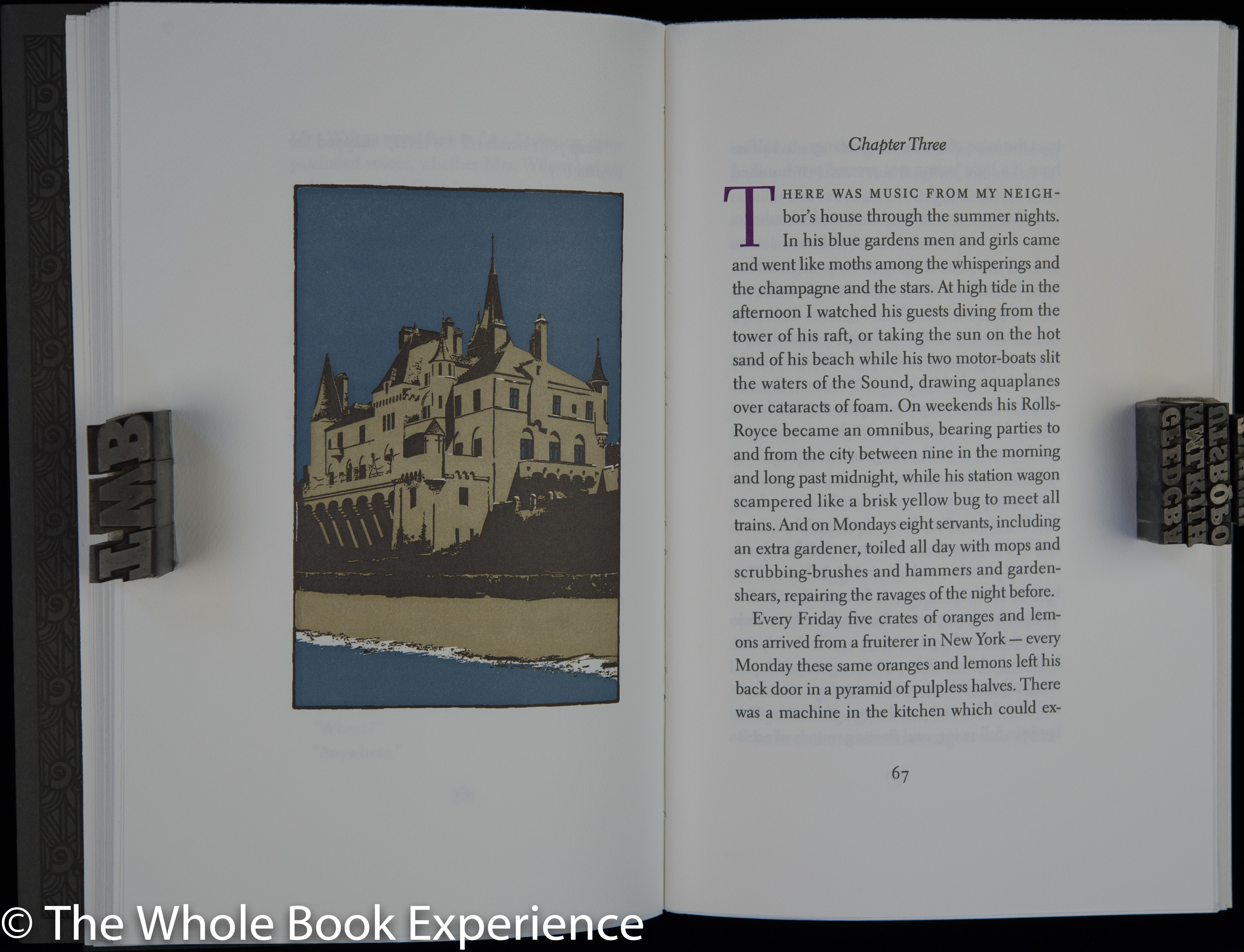
I feel for the women characters in the book and given the behavior of the highest authority in the land right now, it seems that many wealthy men’s behavior and attitude towards women haven’t changed much. With money and privilege, Gatsby feels that he is entitled even to his ridiculous love fantasy coming true. But the house of gilt-edged cards comes down, albeit in a way that is not really Gatsby’s fault.
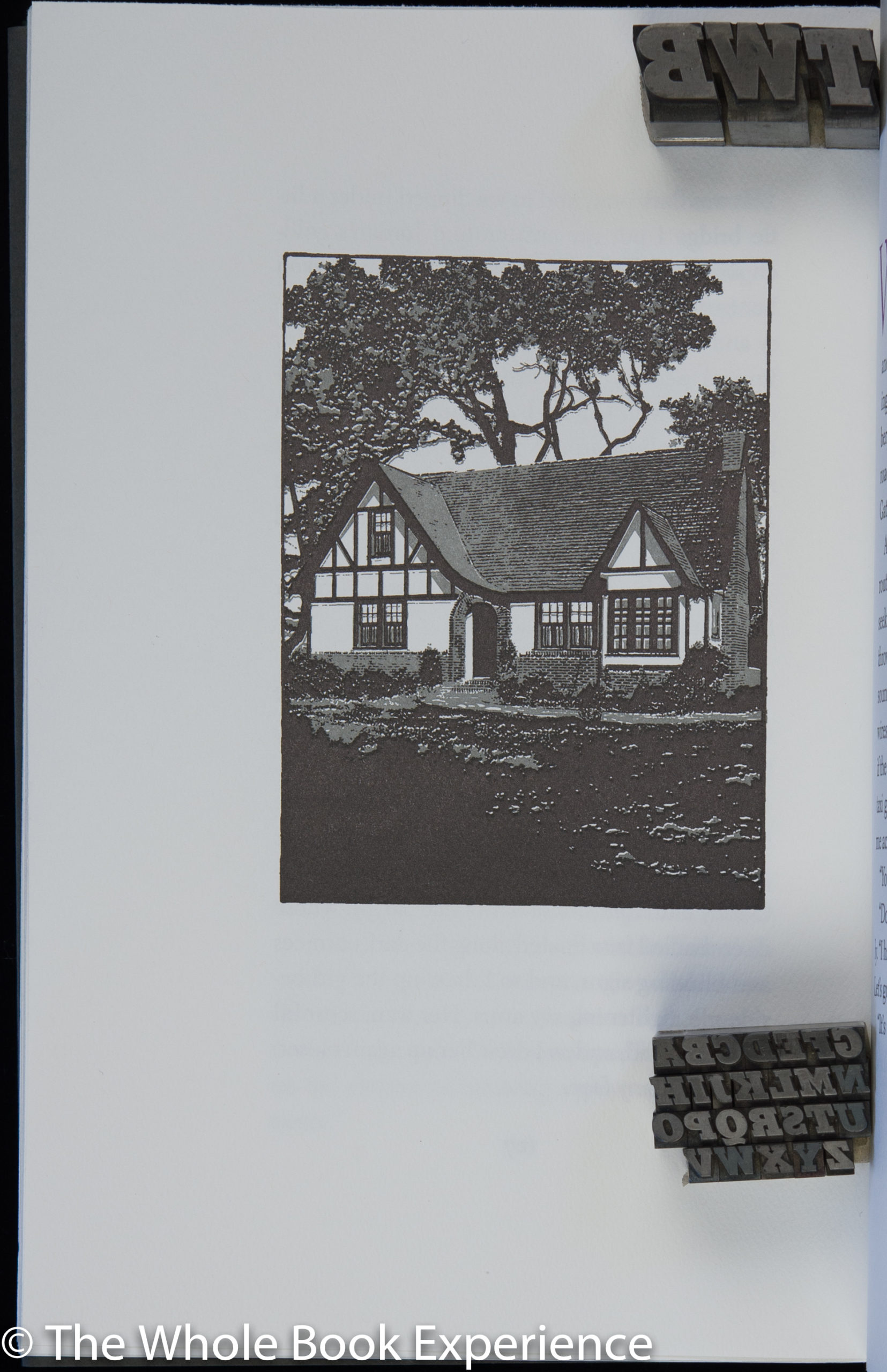
As I said, it took the appearance of the affordable ($95!) paper-wrapped state of Thornwillow Press’ edition to finally get me around to reading Fitzgerald. And despite the novel not really being my cup of tea, the Thornwillow edition has much to recommend it. The art deco design on the wrapper is spot on for the novel and quite beautiful with the gold-stamped titling. I also liked the choice of illustrations for the book as it accentuates the feeling of place that permeates the novel and that was the thing I appreciated most. I will say that illustrator Mary Etcher’s and Peter Pennoyer’s idea of what Nick’s “cottage” looked like was a lot nicer than the impression I got from reading. The difference between the mansion and the bungalow is often a lot more dramatic here in Southern California coastal towns. Ah, well. That’s a small nit. The concept of using place illustrations, many of which are still there today, reminds me of Arion Press’ edition of Edith Wharton’s The Age of Innocence, where photographs were used, and which I enjoyed for the same reasons. These illustrations anchor the novels securely in place while the characters and their actions stormed through them.
There is an amusing passage in the book about books and the way people perceive them and the people that have them. At one of Gatsby’s parties, Nick and his lady friend step into the library, where the following dialogue ensues:
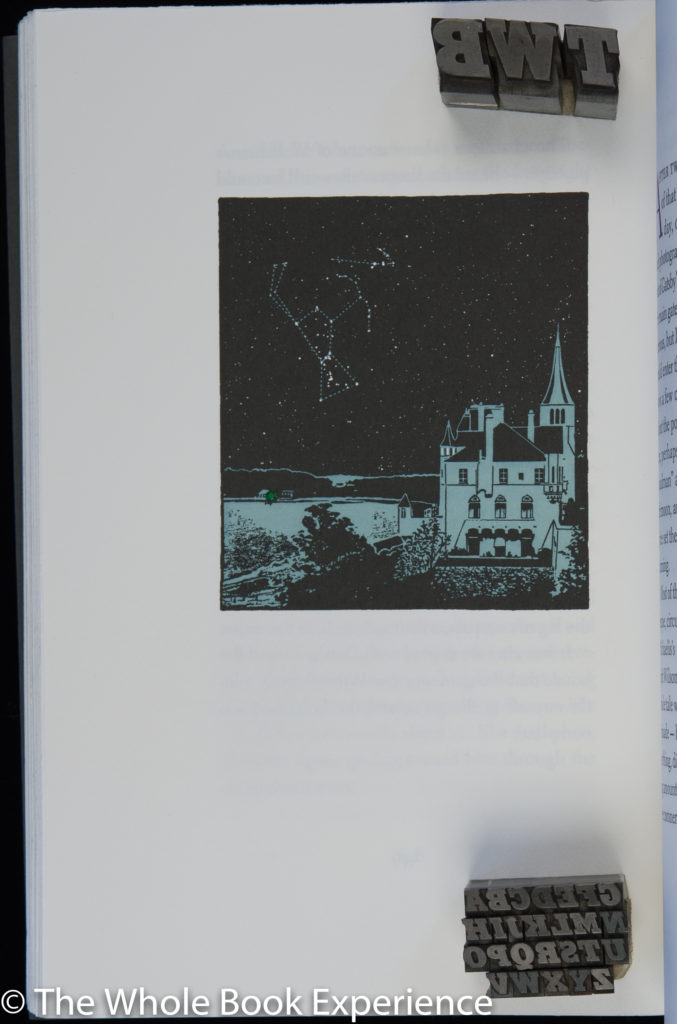
“What do you think?” he demanded impetuously.
“About what?”
He waved his hand toward the bookshelves.
“About that. As a matter of fact you needn’t bother to ascertain. I ascertained. They’re real.”
“The books?”
He nodded.
“Absolutely real–have pages and everything. I thought they’d be a nice durable cardboard. Matter of fact, they’re absolutely real. Pages and–Here! Lemme show you.”
Taking our skepticism for granted, he rushed to the bookcases and returned with Volume One of the “Stoddard Lectures.”
“See!” he cried triumphantly. “It’s a bona-fide piece of printed matter. It fooled me. This fella’s a regular Belasco. It’s a triumph. what thoroughness! What realism! Knew when to stop, too–didn’t cut the pages. But what do you want? What do you expect?”
Horrifying to this “reader”! As a quirky nod to that, Luke Pontifell, proprietor of the press, decided not to cut the pages of the paper-wrapped edition so as to leave that to the owner of the book. I enjoyed the exercise, as I do when I find a treasure of an old book with uncut pages. [Note: I bought a hundred-year-old 40-volume set of Balzac a couple of years ago that I am slowly making my way through. I have to cut those pages as I read too. While it makes it a jewel of a purchase for me, I feel a bit of sorrow for old books that are never read until they fall into this reader’s hands.]
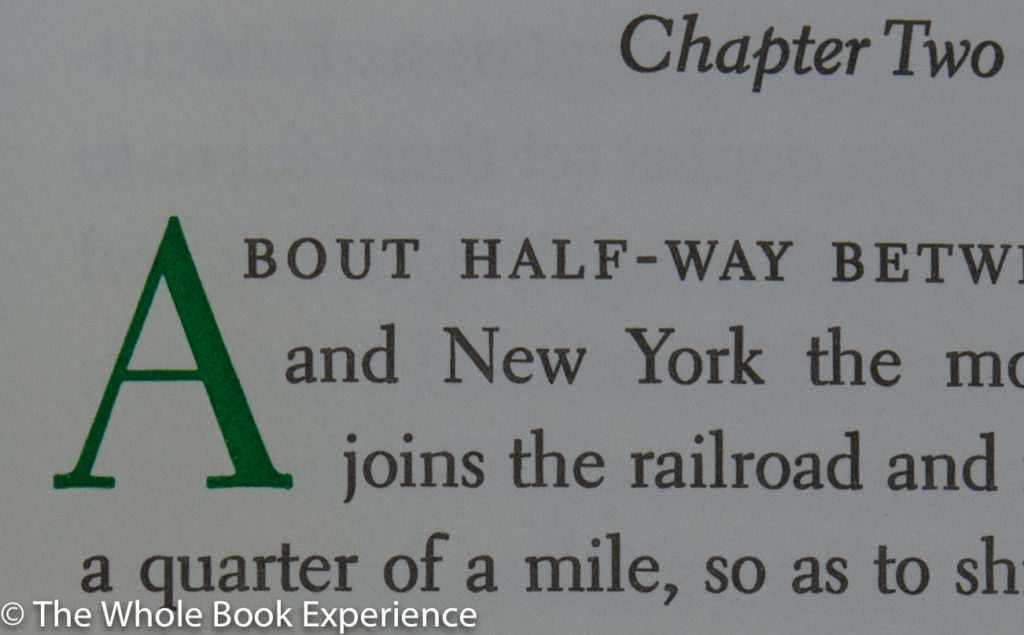
I have four Thornwillow Press editions and I feel that with every title their presswork is getting better. There is occasional unevenness of impression and inking but this is getting less and less as the craftspeople get more and more experience on the press. Luke recently made a comment on a blog post that when he needed printers he couldn’t simply put an ad in the paper and get them, they had to be trained up through the work. So maybe we are seeing those craftspeople growing into their craft.
I would like to see credit given to the contributors, like the illustrator, on the title page. Since I’ve made this same comment on some of their other editions, it seems to be an intentional design feature(?) of the press to bury it somewhere else in the edition.
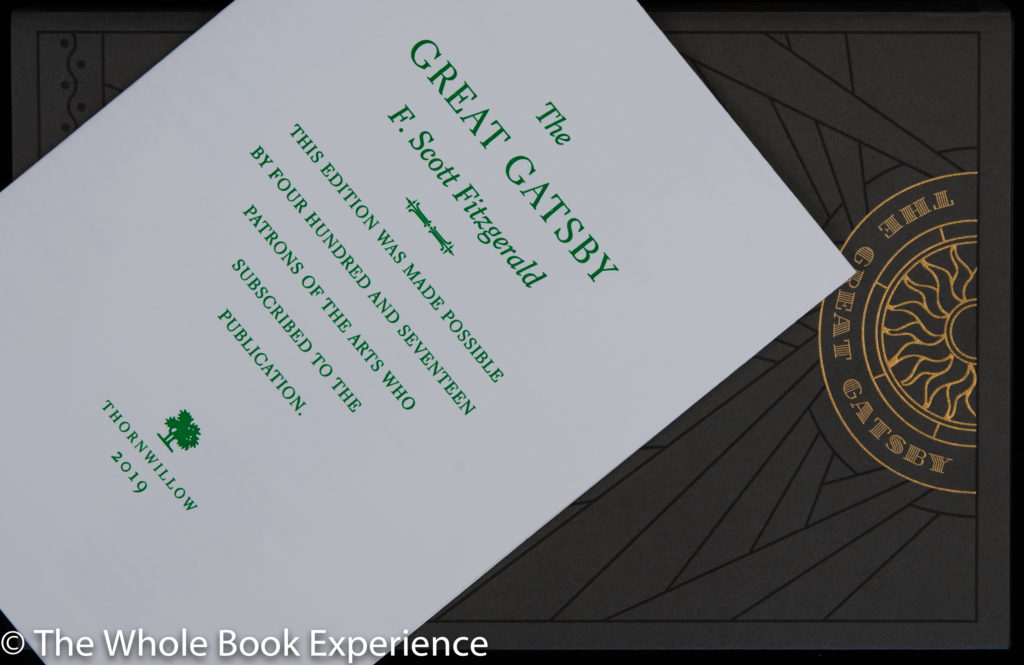
As always, I am extremely happy that a press like Thornwillow is around today. Not many presses are taking on the large prose texts that Thornwillow is tackling, and certainly not with the multiple states that provide a range of price points. Almost every edition they announce stirs up my “fear of missing out,” especially at under $100 for a letterpress printed novel. I have to be completely uninterested in the title for me to not be tempted.

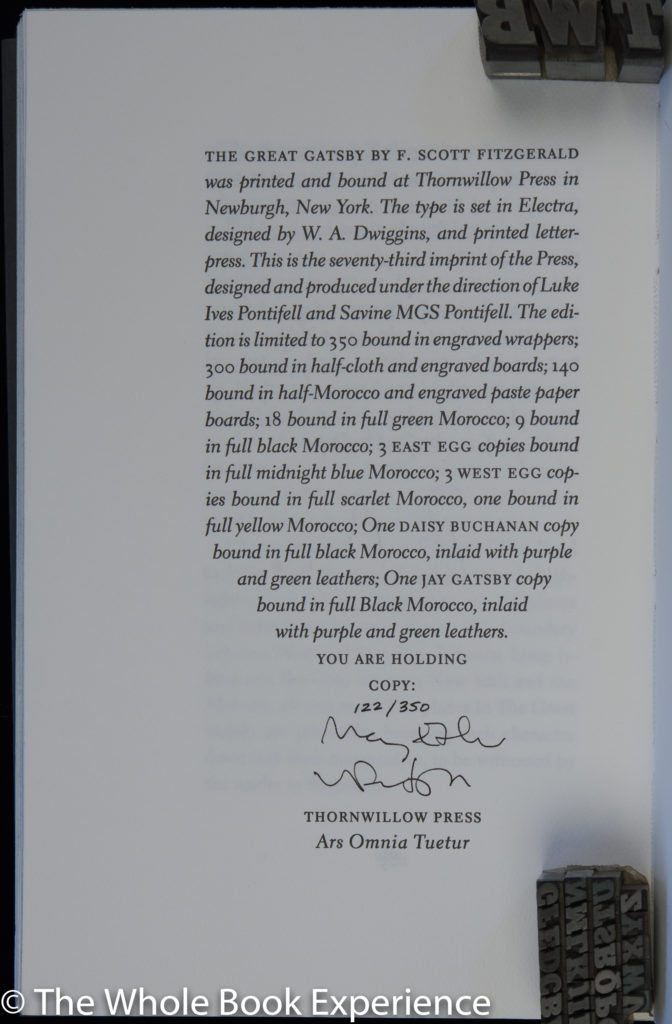
AVAILABILITY: As of this writing, all states are available on the website: paper-wrapper, half-cloth, half-leather, and full leather.
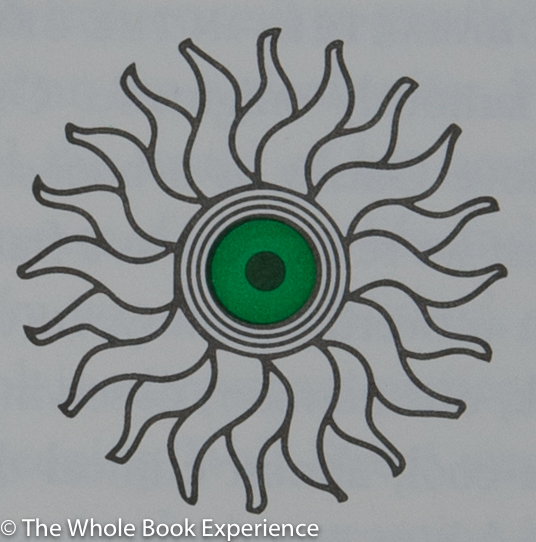
Apologia: WordPress, in the name of progress I suppose, keeps changing its functionality; and this writer, despite his high-tech background and 40 years of using wordprocessors, GUIs, code, and what-not, often can’t figure out why it’s changed and seemed to go backwards functionally. So I apologize if the layout of this post is different from my established “style” as I try to adapt to change.

I had to read “The Great Gatsby” for a lit course in college, and was also completely underwhelmed. I don’t know why this is considered a classic, other than groupthink mentality. I was also turned off Ernest Hemingway by reading “The Old Man and the Sea”. I’ve never read anything since by either author. And just for the record, I also tried to read “The Ambassadors” by Henry James and just couldn’t continue. Thirty years later I have tried to read a short story of James’ and couldn’t get past the first page. There are too many great books by wonderful authors to waste time trying to wade through these people’s drivel.
Well, those are certainly three writers firmly established in the American White Male Canon. I’ve read Portrait of a Lady by James and several of Hemingway’s books and now this Fitzgerald. I’m not champing at the bit to read another by any of them at this point. The James was long enough ago that I don’t remember a lot except that maybe I liked his “writing” the best of the three. I’m actually more tempted to read his brother William at this point.
I admit to not “getting” The Great Gatsby and spending my time reading it waiting desperately for it to be over. I hated the characters, the story, the place and by the end the writer himself. That said I think Thornwillow did a wonderful job in this edition and as you say their press work is on the up. $95 for a letterpress printed full length novel really is a no brainer.
Pingback: The Great Gatsby by F. Scott Fitzgerald (Limited Editions Club, 1980) – Ubiquitous' Book blog
I’m not sure that unopened, or uncut, pages is a feature I would welcome myself. It seems a little contrived and may expose the book to damage from a clumsy reader. However, your review is a tempting one. I note a couple of typos in the review and assume that the “cards” on the bridge were in fact “cars” and not the publisher’s error.
Thanks for the typo catch! That was indeed my error, not the publishers…